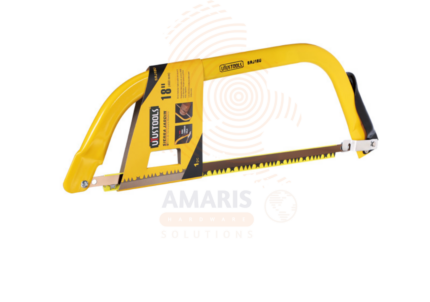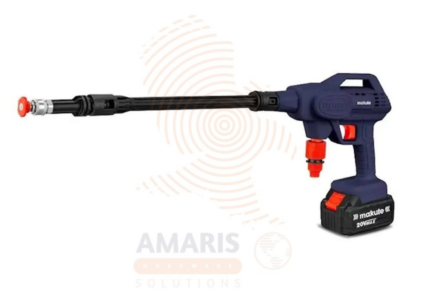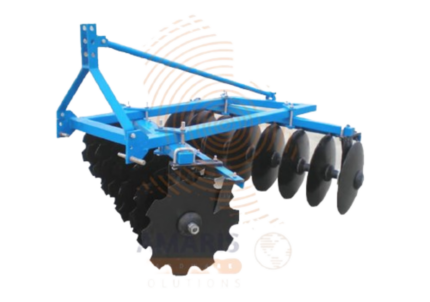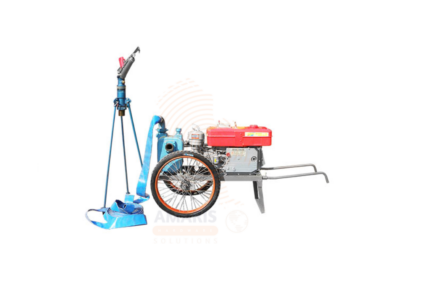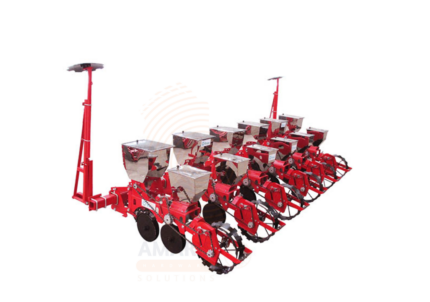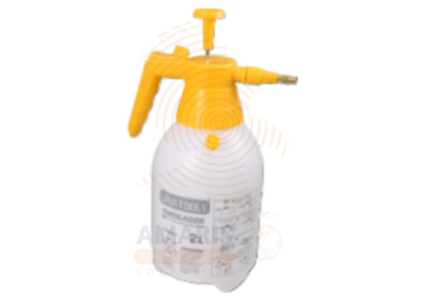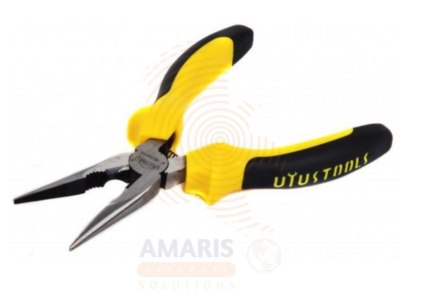
Long Nose Pliers
$16.65 Original price was: $16.65.$15.82Current price is: $15.82.
Lopping Saw
WhatsApp Order
A lopping saw is a specialized cutting tool designed for pruning and trimming tree branches, typically featuring a long, curved blade with large, sharp teeth. This tool is specifically crafted to make it easier to reach and cut through high or thick branches that may be challenging to access with standard pruning shears or a traditional saw. Lopping saws are commonly used in gardening, arboriculture, and forestry to facilitate efficient and controlled pruning of trees and shrubs.
Description
Uses
- Tree Pruning:
- Lopping saws are designed to cut through thick branches, making them ideal for pruning trees. They allow for the removal of dead or overgrown branches to improve the overall health and appearance of the tree.
- Shrub Trimming:
- Lopping saws are effective for trimming and shaping shrubs and bushes, providing a precise and controlled cutting action.
- Landscaping:
- In landscaping projects, lopping saws are useful for shaping trees and plants to achieve a desired aesthetic. They can help maintain a neat and well-groomed landscape.
- Gardening:
- Gardeners often use lopping saws to prune fruit trees, ornamental trees, and other plants in the garden. This helps in controlling growth, promoting flowering, and improving fruit production.
- Clearing Overgrowth:
- Lopping saws are valuable for cutting through dense vegetation and overgrown areas. They can be used to clear paths, trails, and areas where traditional pruning tools may be insufficient.
- Emergency Tree Removal:
- In emergency situations, such as when a tree branch poses a risk of falling, lopping saws can be employed to safely and efficiently remove the hazardous limb.
- Forestry and Arboriculture:
- Professionals in forestry and arboriculture use lopping saws for routine maintenance and care of trees in parks, urban areas, and forests. They are particularly useful for working at heights and reaching branches that are difficult to access.
- Firewood Preparation:
- Lopping saws can be used to cut branches into manageable lengths for firewood. Their portability and ability to cut through thick wood make them handy for this purpose.
- Pruning High Branches:
- Lopping saws are equipped with long handles that enable users to reach high branches without the need for a ladder. This makes them safer and more practical for cutting branches at elevated heights.
- Home and Garden Maintenance:
- Homeowners use lopping saws for general yard maintenance, including the removal of unwanted branches and the shaping of trees and shrubs around the property.
SAFETY HANDLING PRECAUTIONS
- Wear Personal Protective Equipment (PPE):
- Always wear appropriate personal protective equipment, including safety glasses or goggles to protect your eyes from debris, and sturdy gloves to safeguard your hands.
- Wear a Helmet:
- If you're working on larger branches or at heights, consider wearing a safety helmet with a face shield or eye protection to protect your head and face.
- Use Hearing Protection:
- Lopping saws can be noisy, so wear ear protection such as earplugs or earmuffs to prevent hearing damage.
- Wear Long Sleeves and Pants:
- Long sleeves and pants can provide additional protection against scratches, cuts, and exposure to the sun. Choose durable, comfortable clothing suitable for outdoor work.
- Inspect the Lopping Saw:
- Before each use, inspect the lopping saw for any damage or wear. Ensure that the blade is sharp and securely attached. Replace any damaged or dull blades, and tighten any loose components.
- Follow Manufacturer's Instructions:
- Adhere to the manufacturer's guidelines and recommendations for the proper use and maintenance of the lopping saw. This includes information on blade replacement, tensioning, and other important safety considerations.
- Choose the Right Tool for the Job:
- Select a lopping saw that is appropriate for the size of branches you are cutting. Using a tool with the correct capacity helps ensure efficient and safe operation.
- Maintain a Stable Stance:
- Stand on a stable and level surface while using the lopping saw. Keep your feet shoulder-width apart to maintain balance and prevent tripping.
- Use Both Hands:
- Always use both hands to operate the lopping saw. This provides better control and reduces the risk of accidents. Keep one hand on the handle and the other on the auxiliary handle for stability.
- Beware of Falling Debris:
- Be aware of the potential for falling branches or debris. Consider the trajectory of cut branches and make sure there are no people or valuable objects in the immediate area.
- Avoid Overreaching:
- Do not overreach when using a lopping saw, especially when working at heights. If a branch is out of reach, reposition yourself instead of stretching too far.
- Keep Others at a Safe Distance:
- Ensure that bystanders and other workers are at a safe distance while you are using the lopping saw. Communicate with others to avoid accidental collisions.
- Secure the Work Area:
- Remove tripping hazards and ensure a clear path for movement. Secure any branches or debris that could pose a risk during the cutting process.
- Know Your Limits:
- If a task seems beyond your skill level or the tool's capacity, seek professional assistance. Don't attempt to cut branches that are too large or in challenging positions without proper training and experience.
Related products
Bow Saw
A bow saw is a versatile hand saw characterized by a narrow, straight blade that is tensioned within a bow-shaped frame. The frame, usually made of metal or wood, is designed to provide support and stability to the blade while allowing it to be easily replaced when necessary. Bow saws are commonly used for cutting wood and other materials in various outdoor and woodworking applications, leveraging their efficient design to make precision cuts with relative ease. The bow shape of the frame allows for the use of longer blades than traditional straight-handled saws, making bow saws particularly effective in tasks that require longer cutting strokes.
Cordless Pressure Washer
A cordless pressure washer is a portable, battery-powered cleaning device that delivers pressurized water for high-efficiency cleaning without needing power outlets or fixed water sources. It features a rechargeable lithium-ion battery, compact pump, and interchangeable nozzles for adjustable spray patterns. Designed for mobility and ease of use, it can draw water from buckets or portable tanks, making it ideal for remote tasks, outdoor cleaning, and situations where conventional connections are unavailable.
Disc Harrow
A disc harrow is an essential agricultural implement used to till the soil, break up clods, and prepare the land for planting. It consists of multiple concave metal discs arranged on one or more axles, which rotate and cut into the soil as it is pulled across fields by a tractor or other machinery. The discs chop up crop residue, aerate the soil, and create a smooth, even seedbed. Disc harrows vary in size and configuration to suit different soil types and farming needs. This tool improves soil quality, weed control, and crop yields, making it indispensable in modern farming.
Folding Saw
PRODUCT DESCRIPTION
A folding saw is a compact and portable cutting tool designed for outdoor and survival activities. It typically features a serrated blade that folds into a handle, allowing for safe and convenient storage when not in use. Folding saws are commonly used for cutting through wood, branches, or other vegetation during camping, hiking, and various outdoor adventures. The folding design enhances portability and safety, making it a versatile tool for enthusiasts and professionals alike.
Irrigation Pump Set
An Irrigation Pump Set is a complete system designed to move water efficiently from a source—such as a river, well, pond, or tank—to agricultural fields for crop irrigation. It typically consists of a water pump (centrifugal or submersible), an engine or motor (electric or fuel-powered), piping connections, filters, and sometimes a control panel or automation features. These pump sets are vital in agricultural operations, ensuring consistent and controlled water distribution to crops. They are used across small-scale farms to large commercial operations and are compatible with various irrigation methods like drip, sprinkler, or flood systems. Irrigation pump sets are built for durability, high flow rates, and long operational hours in tough outdoor conditions.
Nylon Square Trimmer Line
PRODUCT DESCRIPTION
A nylon square trimmer line is a type of cutting line used in trimmers and weed eaters for lawn and garden maintenance. It is typically made of nylon material and has a square cross-sectional shape, as opposed to a round or other geometric shape. The square design enhances cutting efficiency and durability, allowing the trimmer line to effectively cut through grass, weeds, and other vegetation. The choice of nylon as the material ensures flexibility, strength, and resistance to wear, making it suitable for various cutting tasks in landscaping and lawn care.
Planter
A Planter is a container or device used to hold soil and plants for gardening, landscaping, or indoor decoration. Planters come in various sizes, shapes, and materials, such as plastic, ceramic, metal, or wood, designed to provide an ideal growing environment for flowers, herbs, vegetables, or ornamental plants. They are essential for organizing plants in limited spaces, improving aesthetics, and facilitating plant care by providing drainage and soil containment.
Pump Sprayer
A pump sprayer, also known as a hand pump sprayer or pressure sprayer, is a manually operated device designed for spraying liquids such as pesticides, herbicides, fertilizers, cleaning solutions, or water. It typically consists of a container to hold the liquid, a pump mechanism to pressurize the container, a wand or nozzle for directing the spray, and a handle for pumping and carrying. Users pressurize the container by manually pumping the handle, creating pressure that allows the liquid to be sprayed in a controlled manner when the nozzle is activated. Pump sprayers are commonly used in gardening, agriculture, pest control, and various household applications for targeted and even distribution of liquids.


 Acrylic Sealants
Acrylic Sealants Construction Adhesives
Construction Adhesives Double-Sided Tape
Double-Sided Tape Duct Tape
Duct Tape Electrical Tape
Electrical Tape Epoxy & Resins
Epoxy & Resins Masking Tape
Masking Tape
 Automotive Wrenches & Socket Sets
Automotive Wrenches & Socket Sets Battery Chargers & Jump Starters
Battery Chargers & Jump Starters Car Jacks & Stands
Car Jacks & Stands Car Wash & Detailing Products
Car Wash & Detailing Products Diagnostic Tools
Diagnostic Tools Tire Inflators
Tire Inflators Vehicle Lighting
Vehicle Lighting Oil & Lubricants
Oil & Lubricants
 Adhesives & Sealants
Adhesives & Sealants Bricks & Blocks
Bricks & Blocks Cement & Concrete
Cement & Concrete Drywall & Plaster
Drywall & Plaster Flooring (Tiles, Wood, Laminate)
Flooring (Tiles, Wood, Laminate) Lumber & Plywood
Lumber & Plywood Paints, Primers & Coatings
Paints, Primers & Coatings Insulation Materials
Insulation Materials Roofing Materials
Roofing Materials
 Circuit Breakers
Circuit Breakers Electrical Cables & Wires
Electrical Cables & Wires Switches & Sockets
Switches & Sockets Fuses & Relays
Fuses & Relays Connectors & Terminals
Connectors & Terminals Electrical Boxes & Panels
Electrical Boxes & Panels Conduit & Fittings
Conduit & Fittings Lighting Fixtures & Bulbs
Lighting Fixtures & Bulbs Extension Cords & Power Strips
Extension Cords & Power Strips
 Anchors
Anchors Bolts
Bolts Clips & Clamps
Clips & Clamps Screws
Screws Nuts
Nuts Washers
Washers Rivets
Rivets Nails
Nails Threaded Rods
Threaded Rods
 Hammers
Hammers Measuring Tools (Tapes, Levels, Calipers)
Measuring Tools (Tapes, Levels, Calipers) Screwdrivers
Screwdrivers Pliers & Cutters
Pliers & Cutters Saws & Blades
Saws & Blades Chisels & Punches
Chisels & Punches Allen Keys & Hex Keys
Allen Keys & Hex Keys Ratchets & Socket Sets
Ratchets & Socket Sets Wrenches & Spanners
Wrenches & Spanners
 Power Tool Accessories (Blades, Bits, Discs)
Power Tool Accessories (Blades, Bits, Discs) Rotary Tools
Rotary Tools Saws (Circular, Jigsaw, Reciprocating)
Saws (Circular, Jigsaw, Reciprocating) Drills & Drivers
Drills & Drivers Grinders & Sanders
Grinders & Sanders Heat Guns
Heat Guns Nail Guns
Nail Guns Impact Wrenches
Impact Wrenches Batteries & Chargers
Batteries & Chargers
 Pipes & Fittings (PVC, Copper, PEX)
Pipes & Fittings (PVC, Copper, PEX) Plumbing Tools
Plumbing Tools Pumps & Motors
Pumps & Motors Sealants & Adhesives for Plumbing
Sealants & Adhesives for Plumbing Valves & Taps
Valves & Taps Water Heaters
Water Heaters Drainage Systems
Drainage Systems Faucets & Fixtures
Faucets & Fixtures Hoses & Tubing
Hoses & Tubing
 Hinges & Latches
Hinges & Latches Hooks & Brackets
Hooks & Brackets Window Hardware
Window Hardware Chains & Cables
Chains & Cables Casters & Wheels
Casters & Wheels Shelving & Storage Systems
Shelving & Storage Systems Door Handles & Locks
Door Handles & Locks Drawer Slides & Cabinet Hardware
Drawer Slides & Cabinet Hardware
 Personal Protective Equipment (PPE)
Personal Protective Equipment (PPE) Respirators & Masks
Respirators & Masks Safety Glasses
Safety Glasses Safes
Safes Security Cameras
Security Cameras Gloves
Gloves Helmets
Helmets Ear Protection
Ear Protection Fire Safety Equipment
Fire Safety Equipment Locks & Padlocks
Locks & Padlocks Motion Sensors & Alarms
Motion Sensors & Alarms
 Garden Fencing
Garden Fencing Garden Furniture Hardware
Garden Furniture Hardware Lawn Mowers
Lawn Mowers Trimmers & Edgers
Trimmers & Edgers Shovels & Spades
Shovels & Spades Rakes & Hoes
Rakes & Hoes Pruning Shears & Loppers
Pruning Shears & Loppers Watering Systems (Hoses, Sprinklers, Nozzles)
Watering Systems (Hoses, Sprinklers, Nozzles)
 Interior Paints
Interior Paints Paint Brushes & Rollers
Paint Brushes & Rollers Paint Strippers & Thinners
Paint Strippers & Thinners Paint Trays & Accessories
Paint Trays & Accessories Exterior Paints
Exterior Paints Spray Paints
Spray Paints Primers & Undercoats
Primers & Undercoats Varnishes & Stains
Varnishes & Stains
 Gaskets & Seals
Gaskets & Seals Hydraulic Fittings
Hydraulic Fittings Industrial Fasteners
Industrial Fasteners Industrial Hoses
Industrial Hoses Lubricants & Greases
Lubricants & Greases Metal Sheets & Bars
Metal Sheets & Bars Bearings & Bushings
Bearings & Bushings Belts & Pulleys
Belts & Pulleys
 HVAC Filters
HVAC Filters Insulation for HVAC
Insulation for HVAC Air Conditioners
Air Conditioners Refrigerants
Refrigerants Ventilation Ducts & Fittings
Ventilation Ducts & Fittings Thermostats & Controllers
Thermostats & Controllers Fans & Blowers
Fans & Blowers
 Pegboards & Hooks
Pegboards & Hooks Shelving Units
Shelving Units Storage Bins & Containers
Storage Bins & Containers Toolboxes & Tool Chests
Toolboxes & Tool Chests Workbenches
Workbenches Drawer Organizers
Drawer Organizers Labeling Supplies
Labeling Supplies
 Welding Accessories (Clamps, Brushes)
Welding Accessories (Clamps, Brushes) Welding Electrodes & Rods
Welding Electrodes & Rods Welding Helmets & Gloves
Welding Helmets & Gloves Welding Machines
Welding Machines Soldering Irons & Stations
Soldering Irons & Stations Flux & Solder Wire
Flux & Solder Wire
 Generator Accessories
Generator Accessories Inverters
Inverters Portable Generators
Portable Generators Power Inverters
Power Inverters Transfer Switches
Transfer Switches Diesel & Gasoline Generators
Diesel & Gasoline Generators
 Transport Equipment: Carts, Dollies, and Hand Trucks
Transport Equipment: Carts, Dollies, and Hand Trucks Storage Solutions: Pallets, Racks, and Containers
Storage Solutions: Pallets, Racks, and Containers Lifting Equipment: Hoists, Cranes, and Jacks
Lifting Equipment: Hoists, Cranes, and Jacks Conveyors and Accessories: Belts and Rollers
Conveyors and Accessories: Belts and Rollers

